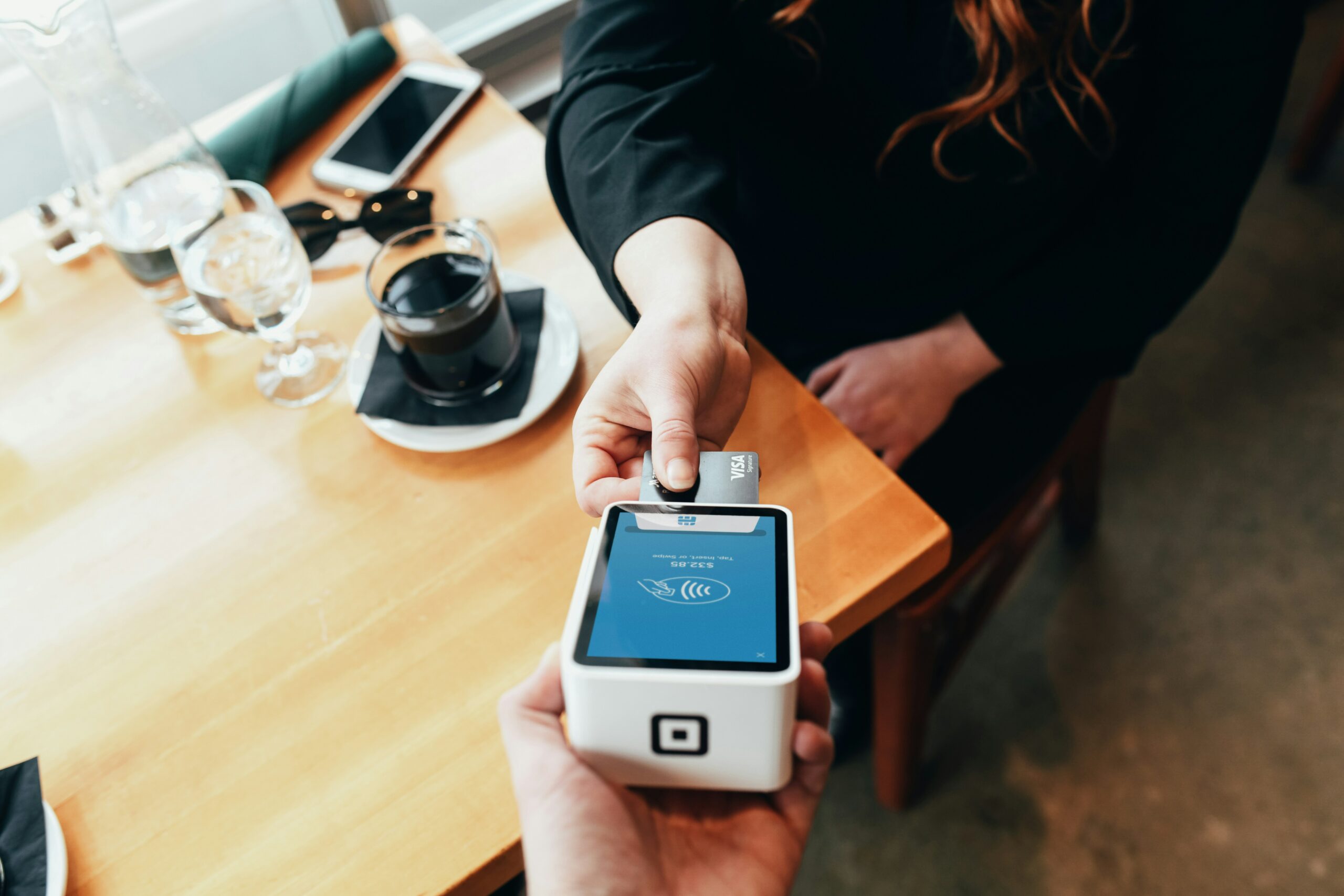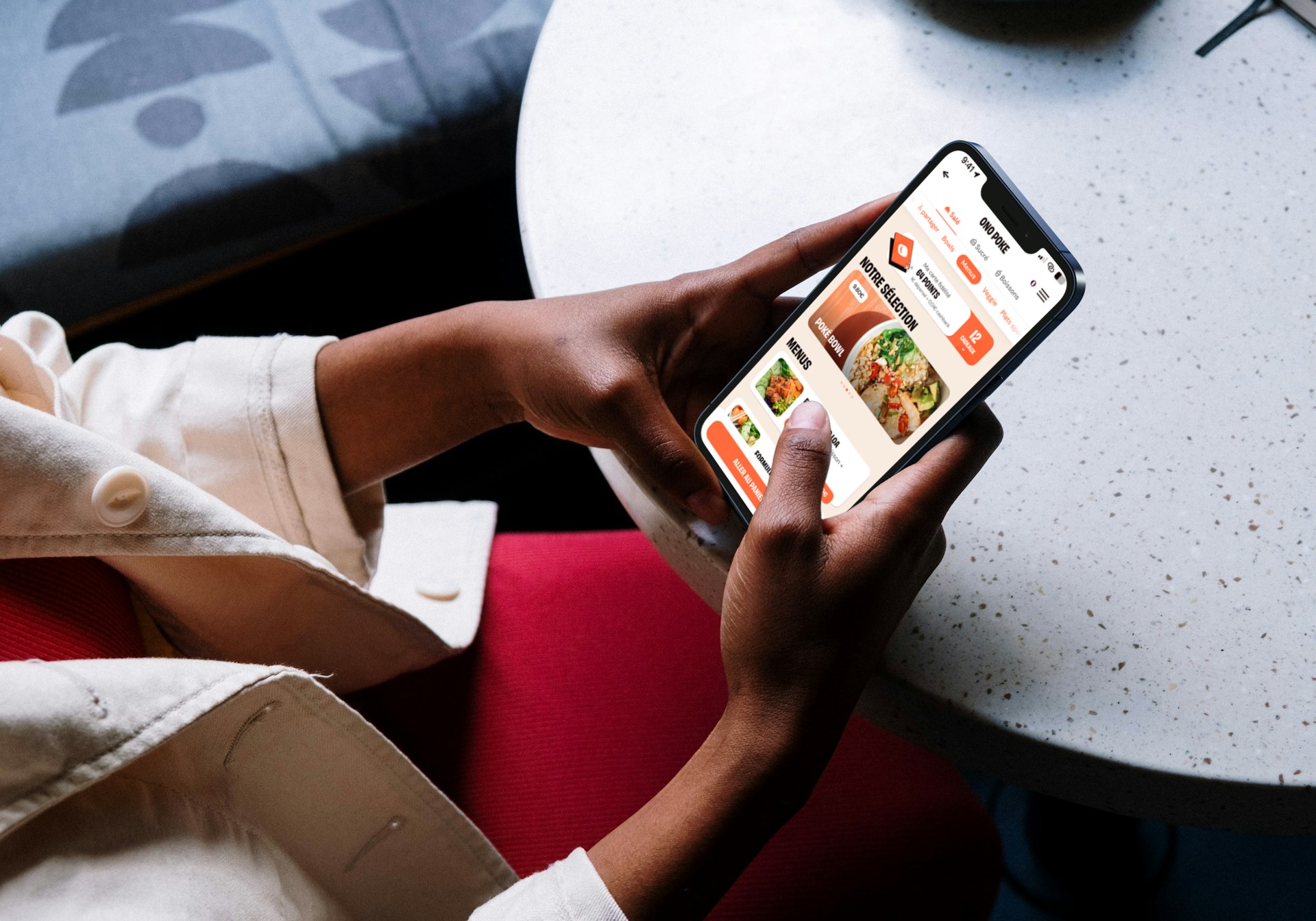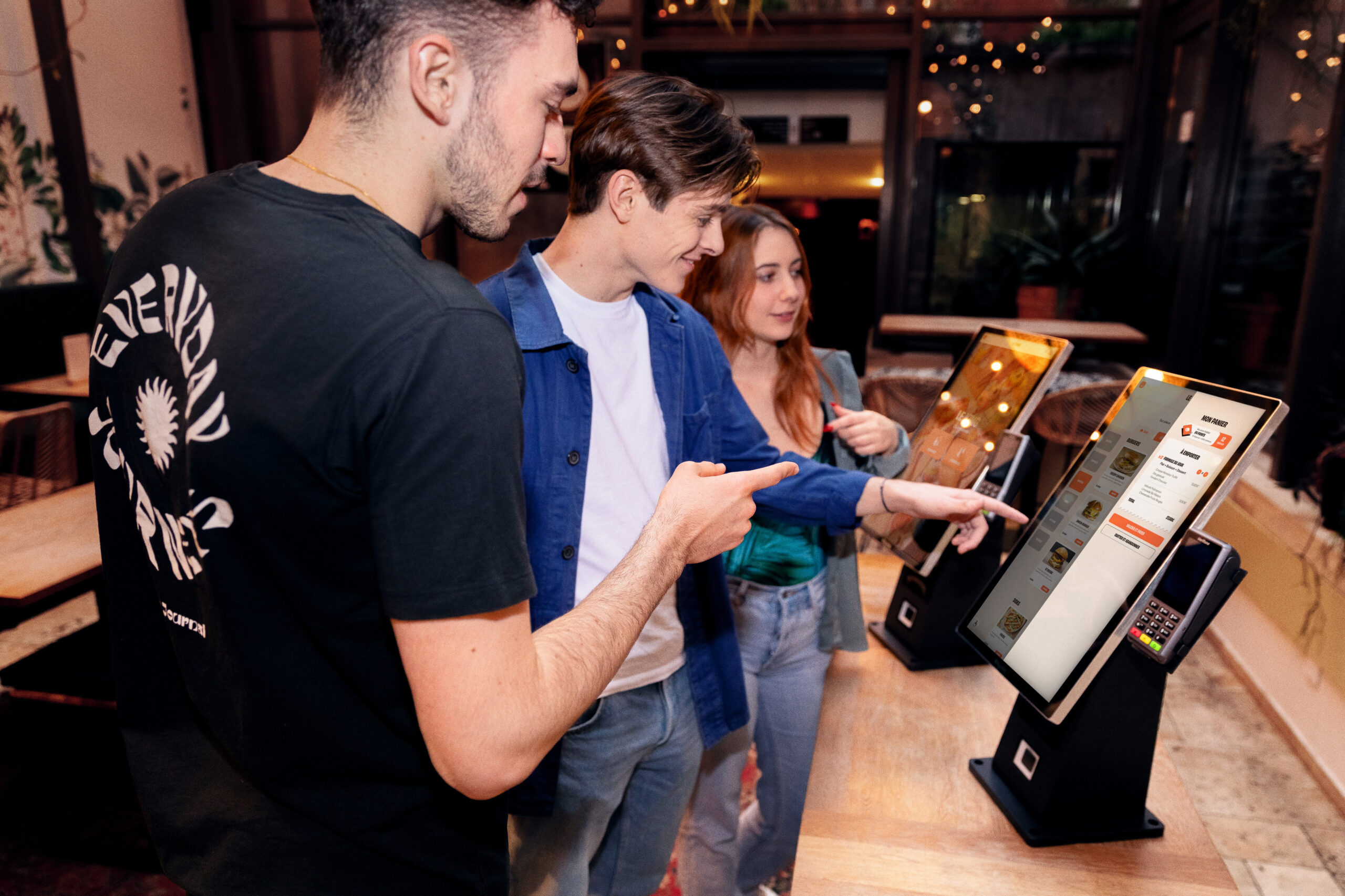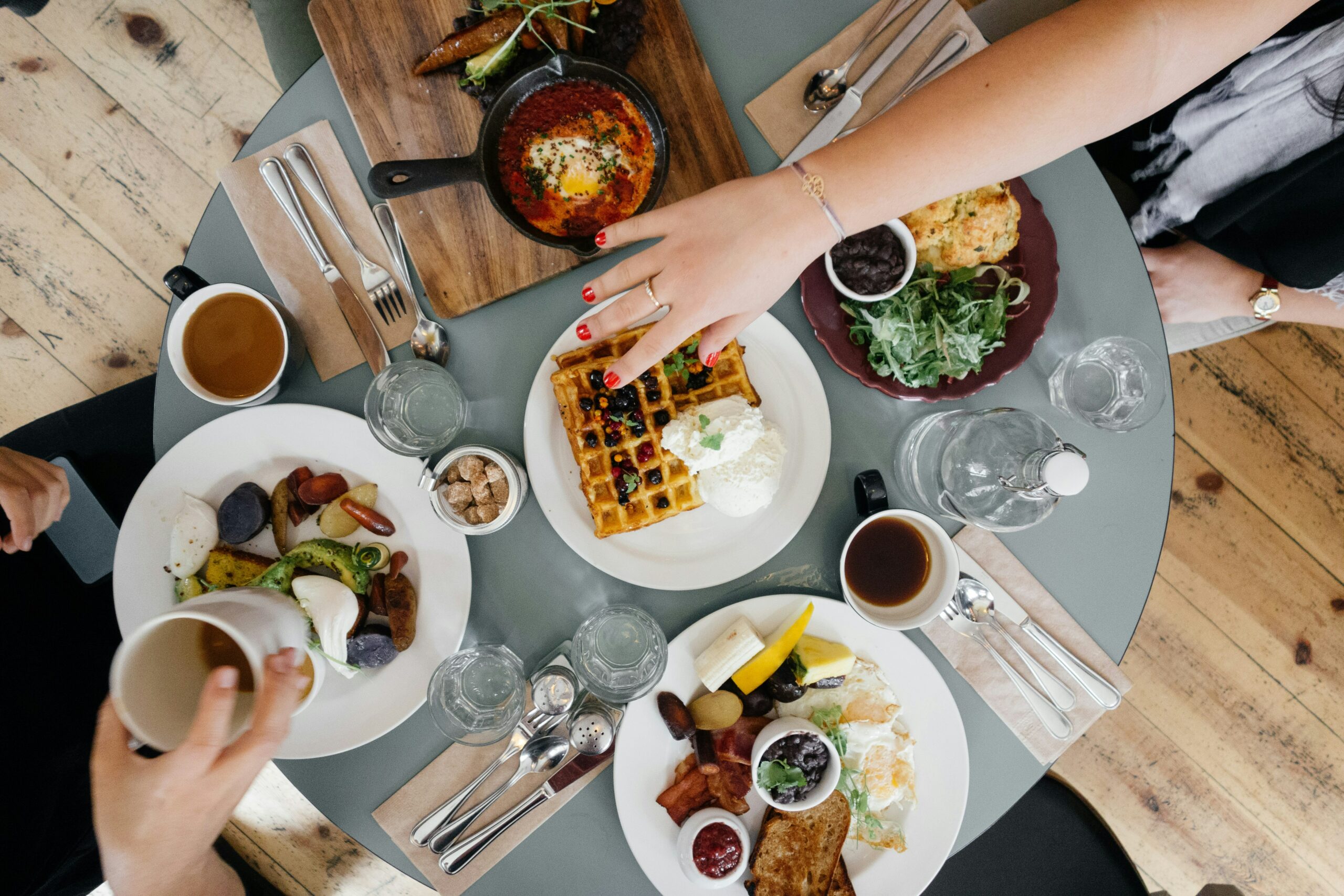QR Code payments vs Eftpos terminals: which solution is right for your restaurant?
03 February 2025
We no longer present QR Code and its many benefits for the foodservice sector.
Over the years, this technology has proved to be a versatile tool, capable of meeting both operational and strategic needs. Ordering, loyalty, communication... and, of course, payment.
With its growing adoption, the QR Code has become a serious alternative to traditional electronic payment terminals (EPTs). While the latter are still a must for many establishments, QR Code offers a more practical approach, perfectly adapted to new customer expectations.
In this article, we take a closer look at these two solutions: costs, customer experience, operational benefits...
The objective? Helping you find the winning strategy for your restaurant, one that combines efficiency, customer satisfaction and optimization of resources.
So, QR Code or TPE? Here's what you need to make the right choice.
Costs: QR Code or TPE, which solution is more cost-effective?
Installation and set-up costs: QR Code, the economical option
Payment by QR Code has the advantage of being affordable, even for small budgets. No need to invest in special equipment: a simple display (on a table, an easel or a receipt) is all that's needed.
QR Code solutions often work with monthly subscriptions or transaction fees based on usage, making them particularly flexible.
In contrast, electronic payment terminals (EPTs) require a higher initial investment. The purchase of a TPE generally costs between €150 and €400.or more for top-of-the-range models.
Rental costs range from €13 to €40 per month, depending on the service provider. For establishments with several cash points, these costs quickly add up.
Fees per transaction: differences to be taken into account
QR Codes rely on platforms such as Stripe, PayPal or specialized service providers. These solutions apply variable fees (around 1.4% to 2.9% of the amount, sometimes with an additional fixed cost of 0.10 to 0.15€). These fees may seem high for low average tickets, but remain competitive depending on the volume of transactions.
TPEs, on the other hand, are connected to banks, with often lower commissions on each transaction (averaging around 0.6% to 2%). However, these fees may vary according to your contract and include additional fixed monthly costs.
Please note: banks sometimes apply minimum fees per card, which can eat into your margins on small transactions.
Equipment maintenance and renewal: the hidden cost of VSEs
The QR Code needs neither maintenance nor renewal. Once your QR Codes have been configured and displayed, there are no additional costs, unless you decide to change or update your media. You are solely dependent on the quality of your Internet connection and the reliability of your service provider.
On the other hand, VSEs require regular attention: updates, batteries to charge, breakdowns to manage, and sometimes even replacement in the event of failure. If you opt for rental VSEs, you're covered for these contingencies, but at a cost. If you buy, each replacement or repair is at your expense.
These constraints increase with the number of terminals required, particularly in busy establishments.
"QR Codes offer a cost-effective, hassle-free solution, ideal for restaurateurs looking to limit their fixed costs. VSEs remain relevant for those who favor a traditional solution, but their total cost over the long term can weigh, especially for smaller establishments."The key point to remember
Customer experience: which solution best meets their expectations?
QR Code: a fluid, autonomous experience
QR Code payment makes everything quick and easy for your customers. No need to wait for a waiter to pass by their table with a terminal. They scan the code from their phone, access the payment interface, pay in a few clicks, and that's it.
This autonomy is particularly appreciated by a young, connected clientele, but also by regulars of fast-food restaurants, where waiting time can be a decisive criterion.
QR codes also offer a natural transition to a complete digital experience. Numerous service providers make it possible to integrate functionalities such as choice of dishes or even loyalty points registration after payment. As well as making the experience more fluid, this strengthens the bond with your customers.
"47 % of French people say they have already used a solution for consulting a menu, ordering or paying at the table in a restaurant via a QR Code."OpinionWay poll for Lyf
VSEs: a reassuring but sometimes limited solution
TPE remains a familiar method, particularly suited to customers who prefer to interact with staff.
Server support can give the impression of personalized service and reassure those who are not comfortable with new technologies. What's more, TPE is fast, provided there are no queues and the device is working properly.
But this method of payment has its limits. In busy restaurants, an insufficient number of terminals can slow down the service and generate waiting times, especially if each server has to go to the same table several times. Outages or slow connections can also impact the customer experience, creating frustration and dissatisfaction.

Management and efficiency: what are the operational advantages?
QR Code: optimizing time and resources
QR Code payment frees up your teams' time. By eliminating the need to go back and forth with a TPE, your waiters can concentrate on welcoming, serving and satisfying customers. Every order and payment is recorded directly in your system, you also reduce errors due to forgetfulness or poor coordination.
Another advantage: integration with digital solutions for real-time monitoring of transactions. You know at all times which tables have paid, how much has been cashed in, and you can even automate certain aspects, such as sending a receipt ora request for customer advice by email. In short, it's simplified management, especially in high-volume or understaffed establishments.
Finally, QR Codes help to avoid some common bottlenecks. There's no need to multiply the number of EFTPOS terminals for busy periods: your customers can use their phones directly, without having to wait in the aisles. This streamlines service and improves the overall experience.
Very small businesses: direct control, but more restrictive
With a payment terminal, everything goes through your staff. This gives you direct control over the process, but requires impeccable organization to avoid delays. If you don't have enough terminals, or if the equipment breaks down, it can quickly become a headache.
Lhe terminals also require heavier logistics: daily checks, maintenance and fault management. They need to be recharged regularly and remain connected to a reliable network. So many details that can slow down your teams, especially at peak times.
"One of the major assets of the QR Code is that it transfers some of the burden of payment to the customer, without negatively impacting the experience. This can make a real difference in a context of labor shortage."Key point to remember: customer autonomy eases the burden on staff
Flexibility for your restaurant
What if the real choice was not to make one? Give your customers the freedom to pay the way they want, and empower your team to work more efficiently.
You don't choose technology, you choose flexibility. The QR Code, combined with a TPE, offers a complete solution that meets the diversity of customer profiles and your restaurant's operational constraints.
You have everything to gain: smoother management, satisfied customers, and a team relieved of repetitive tasks.
Start by analyzing your needs: traffic, type of clientele, budget. Then test both tools in parallel to fine-tune your strategy.
1,500 restaurateurs have already placed their trust in us
At Obypay, we support over 1,500 restaurant operators in their digital transition to adopt tools tailored to their needs and those of their customers.
Any questions? Our team is available to help you make the right choice for your restaurant.
Explore our other content on digital solutions and their impact on your business:
➜ Digital solutions: 7 ways to make your restaurant more competitive
➜ Catering: everything you need to know about QR codes
➜ Kiosks and QR codes: 3 reasons to adopt them in your establishment












